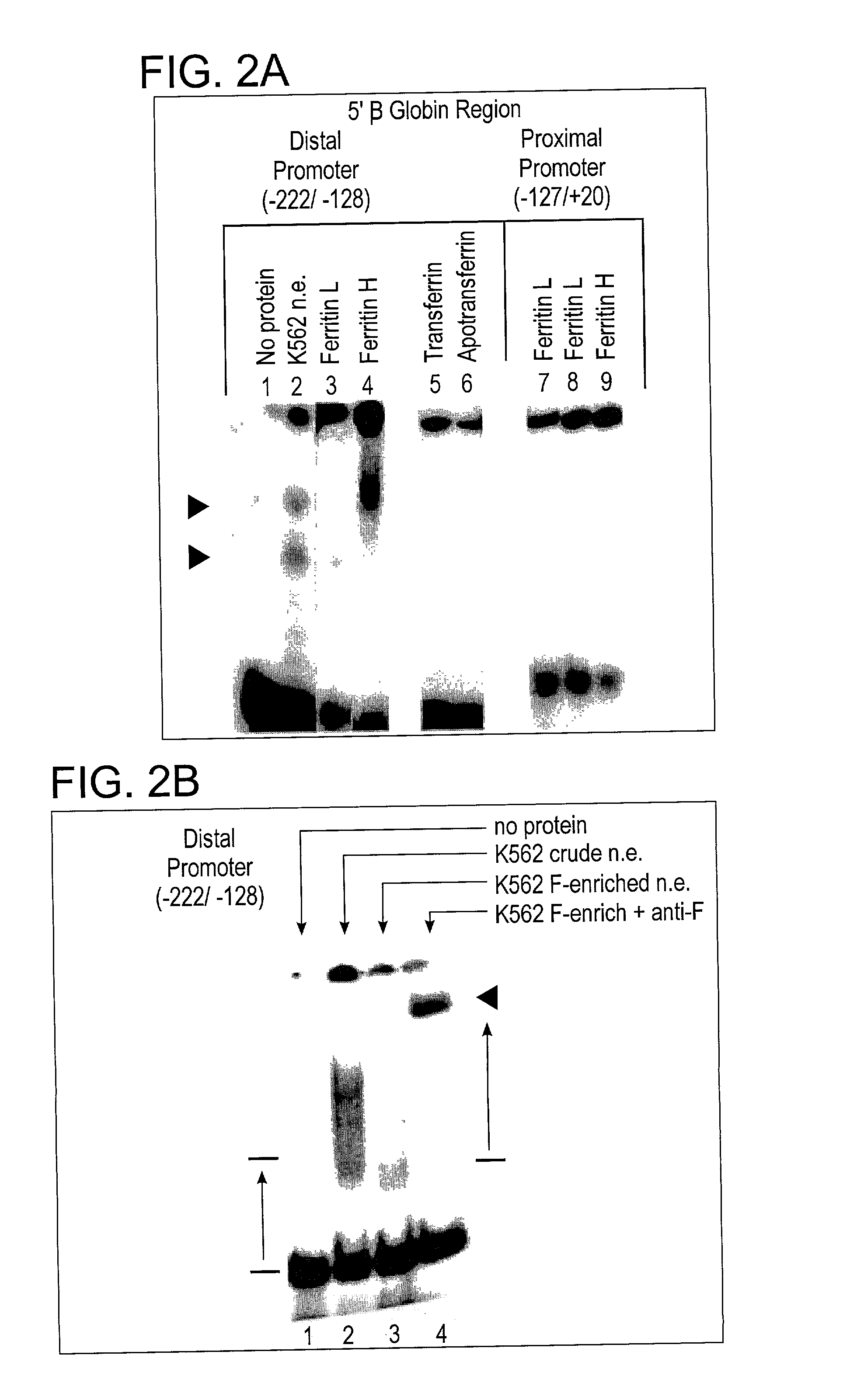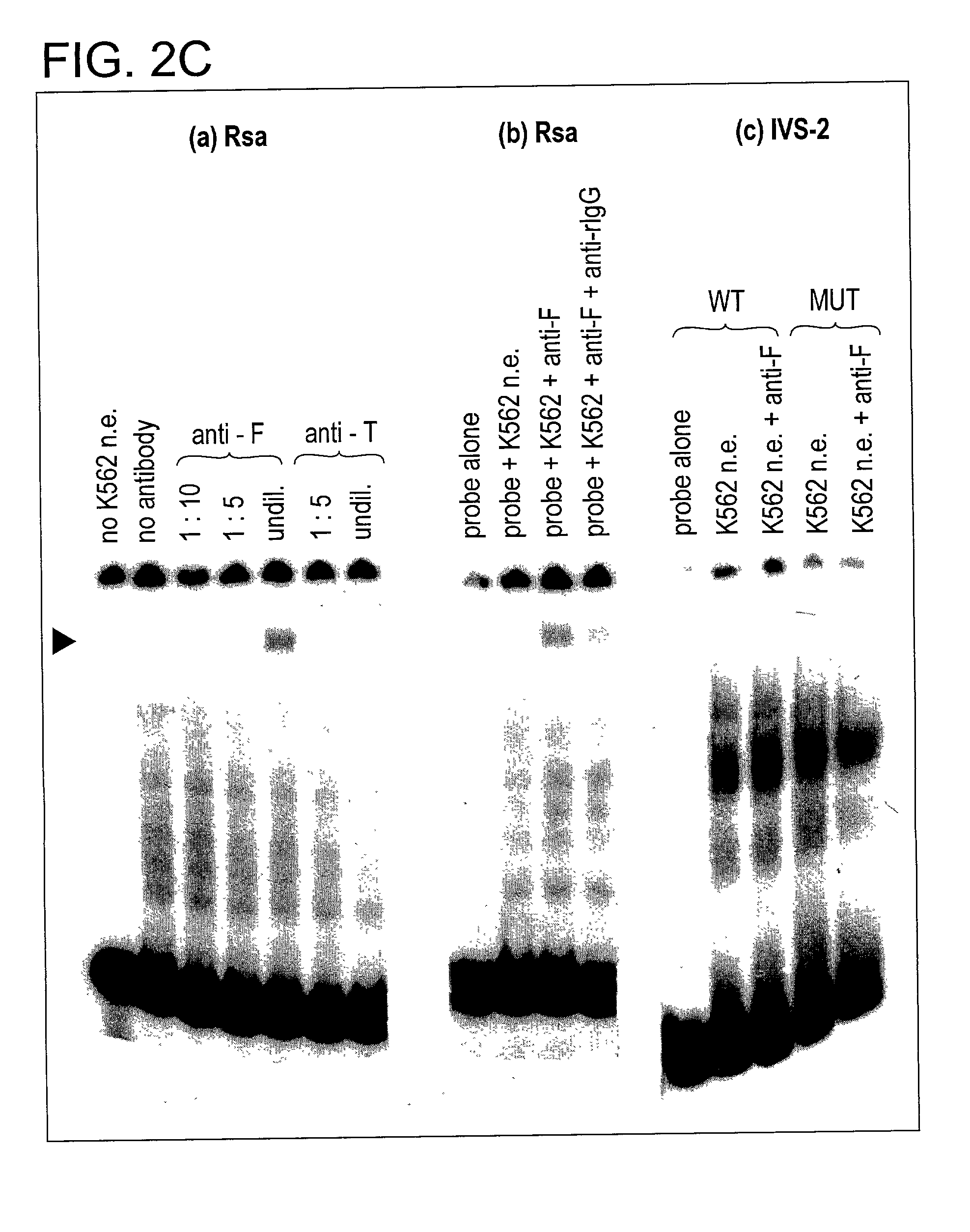Gene regulation therapy involving ferritin
a technology of ferritin and gene regulation, applied in the field of gene regulation therapy involving ferritin, can solve the problems of inability of the molecule to absorb or release oxygen, failure to express sufficient quantities of one or more globin chains, and formation of intact or normal cells, so as to reduce the labile iron pool, reduce the proliferation of cancer cell lines, and suppress the transcription of this gene
- Summary
- Abstract
- Description
- Claims
- Application Information
AI Technical Summary
Benefits of technology
Problems solved by technology
Method used
Image
Examples
example 1
[0102] Materials and Methods
[0103] Cell lines. K562 (human erythroleukemia) cells were grown in suspension in RPMI 1640 medium with 10% or 15% fetal bovine serum (FBS) and antibiotics as described (Berg, P. E., Williams, D. M., Qian, R. L., Cohen, R. B., Cao, S. X., Mittelman, M. & Schechter, A. N. (1989) Nucleic Acids Res 17, 8833-52) and harvested at a density of 10.sup.6 cells / ml for making nuclear extracts. CV-1 (African green monkey kidney epithelial) cells (adherent cells used for transfections / transient gene expression assays) were grown in DMEM with L-glutamine, 10% FBS and antibiotics (Miller, I. J. & Bieker, J. J. (1993) Mol Cell Biol 13, 2776-86).
[0104] Clones, transfections, and gene expression assays. The upstream region (-610 / +20) of the human b-globin gene, previously cloned in pSV2CAT (Berg, P. E., Williams, D. M., Qian, R. L., Cohen, R. B., Cao, S. X., Mittelman, M. & Schechter, A. N. (1989) Nucleic Acids Res 17, 8833-52), was subcloned through pGEM and pSELECT (now...
example 2
[0125] Materials and Methods
[0126] Materials: Calf intestine alkaline phosphatase, T4 polynucleotide kinase, and Sau 96 I were obtained from Promega / Fisher. 32P-.gamma.-ATP was from Dupont / NEN. Polyclonal (rabbit) antiserum to human spleen ferritin was obtained from Sigma Chemical Company. All other reagents were molecular biology grade.
[0127] Restriction fragments and oligonucleotides: The 5' region of the human beta globin gene (from -610 to +20), previously cloned in pSVOCAT, was cut from the purified plasmid by digestions with Hind III and Bam HI. The 630 bp fragment was phenol / chloroform treated, dephosphorylated, and end-labelled with 32-P. Synthetic oligonucleotides corresponding to the core / BP-1 binding site of NCR1 (-584 / -527), the more distal of the two 5'-.beta.-globin silencers, and -164 / -128 region of the promoter were purified and annealed, and the double-stranded oligos were end-labeled as above and / or used as unlabeled competitors in gel mobility shift assays.
[0128] ...
PUM
| Property | Measurement | Unit |
|---|---|---|
| Concentration | aaaaa | aaaaa |
Abstract
Description
Claims
Application Information
 Login to View More
Login to View More - R&D
- Intellectual Property
- Life Sciences
- Materials
- Tech Scout
- Unparalleled Data Quality
- Higher Quality Content
- 60% Fewer Hallucinations
Browse by: Latest US Patents, China's latest patents, Technical Efficacy Thesaurus, Application Domain, Technology Topic, Popular Technical Reports.
© 2025 PatSnap. All rights reserved.Legal|Privacy policy|Modern Slavery Act Transparency Statement|Sitemap|About US| Contact US: help@patsnap.com



